
If you could envision chess being played on a PC, what would it be like? A firm, classic graphic representation of the game is probably what would come to mind, with point and click unit selection, infinite replayability, and possibly some snazzy battle visuals to round it out. Now, add in RPG elements that allow you to level up units and focus on classes and individual unit skill sets. That sounds fairly cool, yeah? Extend that experience to include collectible real world figurines that, via NFC (Near Field Communication), are able to interact with those on the screen. Pretty dope! But then you throw in card battle mechanics, a narrative, and strong online play, and you have an exceptionally cool and unique experience.
That’s the premise behind Prodigy, and including all of those noteworthy points in the description, it’s still only scratching the surface.
My demo with Hanakai’s Prodigy at PAX East was purposefully saved for the end of the week. I wanted to go out on a high note, having had my hands all over controllers and keyboards for three straight days, and my goal was to have the game be the final, unique experience that would send me off with ample gaming closure. Prodigy was just that, providing a scratch to the Skylanders/figurine meta game itch that I’ve developed over the years.
Prodigy is born of a board game mentality, but one that mixes collectibility with elements of chess and Battleship with modern video game technology. And though it revolves around the NFC-capable board for all of its interaction, it really is steeped in its connection to the PC.
My demo had me standing in front of my set of figures and cards, staring at a laptop screen with three digital figures arranged on it facing towards me. A match is initiated once I pass/wave my symbol of power over the board. Though the marketing materials have shown a ring up through this point, the developers informed me of the difficulty of bending the NFC technology along a curve and so a badge-like marker was used instead. It’s worth noting that many of the objects on display at PAX — my marker included — were recently 3D-printed and created. None of the objects used were final designs, from the hard plastic NFC board to the individual action cards, and so a few of the objects were still fairly raw.
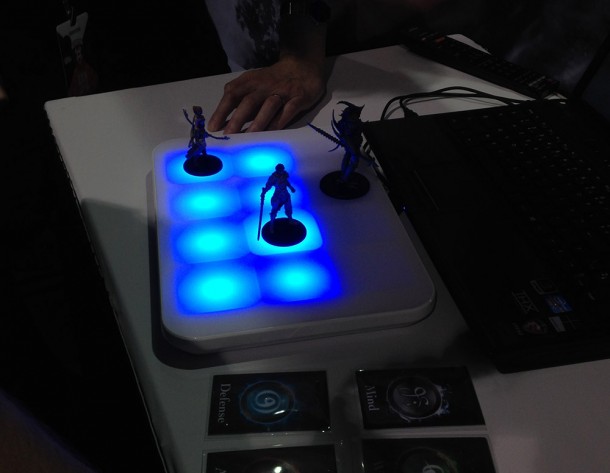
The board itself has been in development for three years, and those in use at PAX were just a milestone. “We want to make them thinner,” the developers explained, though their simple elegance didn’t really need the trait. Cast in white plastic, the base of the device looks like half of a giant bar of soap, with the top made translucent white. It was clear to see the pockets of light-emitting squares on the board, divided up into a 3 by 4 grid that dictated where figures and objects would be placed. I liked the simplicity of the base’s product design, though it didn’t quite fit the medieval fantasy theme of the game, though it did seem agnostic enough to be used as a platform for games of any era.
The figurines themselves were all primed and hand-painted, 3D-printed from many of the in-game character models to allow for maximum link between the digital and real realms. The level of detail, far beyond what we’d find in Skylanders or Disney Infinity, is common among actual board game figurines like Warhammer or D&D. There will be 17 characters at launch, all designed in some part by CEO Jean Bey, with up to 40 total planned for. A team of up to three figures from the same war “company” were place on the board wherever I wanted. Most characters take up one space, but upcoming huge Boss figures take up four. The three rows on the board determine if the character will have high attack but low defense (front), balance offense/defense (middle), or defense-heavy (rear). As I arranged my figures, I instinctively found myself turning them to face the screen and away from me. Who were they looking at? The screen, apparently. Maybe that’s part of the Battleship multiplayer ideology that I found familiar; though I didn’t look at my opponent, I would stare at my laptop as if he was on the other side, commanding the digital toys on the screen.
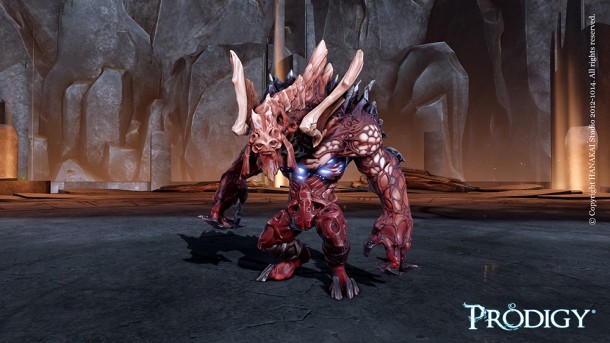
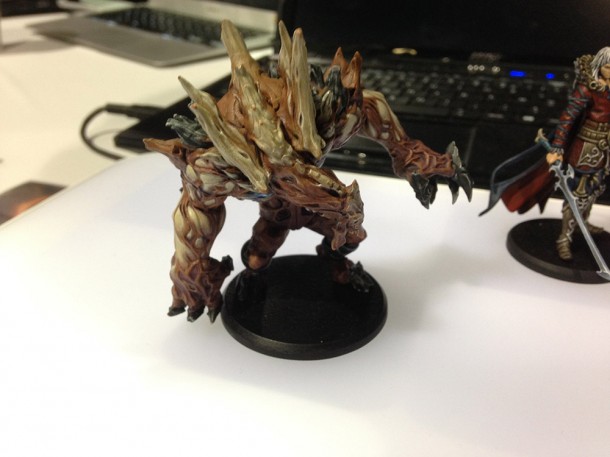
Each turn in the game had me moving a character (or not) and throwing down one of the five action cards at my disposal. The final game will have eight, but only a handful were ready during the demo. Attack cards, skill cards, healing and defense were available, and depending on the situation and character each could have varied effects. In fact, the game encouraged me to try combinations of cards as I built up moves. This kept things from becoming just a paper-rock-scissors outcome and more tactical and determined. Characters attack those opponents directly in front of them, and so it was important to use my Guardian (a larger, more powerful assist figure) as a sort of human (demon?) shield to absorb attacks as I ducked in and out from behind him. Depending on character skills, short and ranged attacks, magic, and combinations would attack different amounts of “squares” on my opponent’s board.
Our battle lasted around ten minutes, but it was certainly interesting in its early developmental stage. Experienced players will likely have longer matches, as parlaying and combinations would become key to how the battles play out.
There is a lot of promise in the multiplayer aspects of Prodigy, but what I found more interesting was the expected single player campaign that the team was building.
The team is putting the board to use in all aspects of the campaign, using it to replace the majority of the game’s controls. There will be heavy narrative driving the game, it was explained, with card and character placement determining how communication with NPCs would play out. Want to be more aggressive in a conversation? Play the attack or power cards. Want to be more conservative? Play the defense card. Want a combination? Play the “will” and “power” cards.
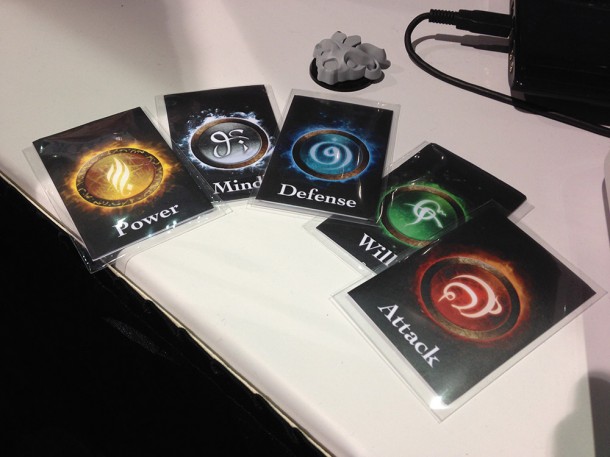
Built along a more traditional RPG point-to-point map system, the player can move his team around the world, with encounters being affected by placement of the figures on the board (and vice versa). In one example, as a team moved on the map the character in the rear row would collect treasure while the others were scouts and moved ahead. Putting the right character in the back meant that they would be at a disadvantage for offense as battles began, while those in the front could likely have first attacks.
But is it forced interaction? Is using the board exclusively a challenge? “No, not really. There were minimal barriers,” Bey told me. “From the game technology to how we use it, it becomes very natural. You’ll forget that there is even a keyboard attached to the PC.” It’s definitely a much more mature take on the growing genre of gaming than what we’ve seen in the market this far. When Prodigy launches in the Fall, it might become further proof for the idea that blending real and digital worlds has staying power.
Prodigy‘s Kickstarter runs for one more week, and has already far surpassed its initial funding goal.
And with a bit of luck, we managed to grab a stack of ten collectible NFC-powered info cards for the game, and are looking to hand them out. These were distributed at PAX East, so if you’d like one please comment below. We’ll take the first ten comments, US-only, and mail them out to you.
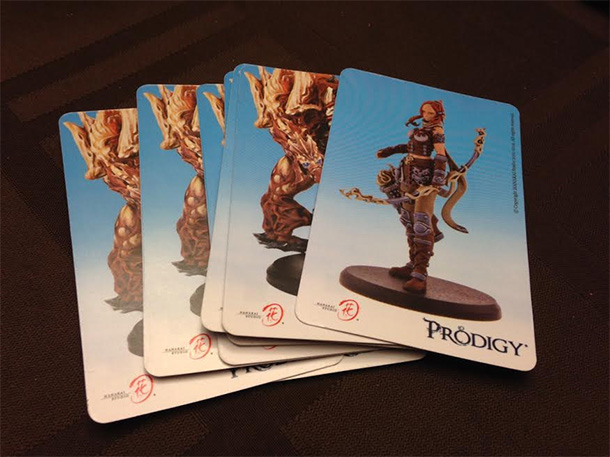
*This article was updated with the following information: 17 characters will be available at launch, not 40.

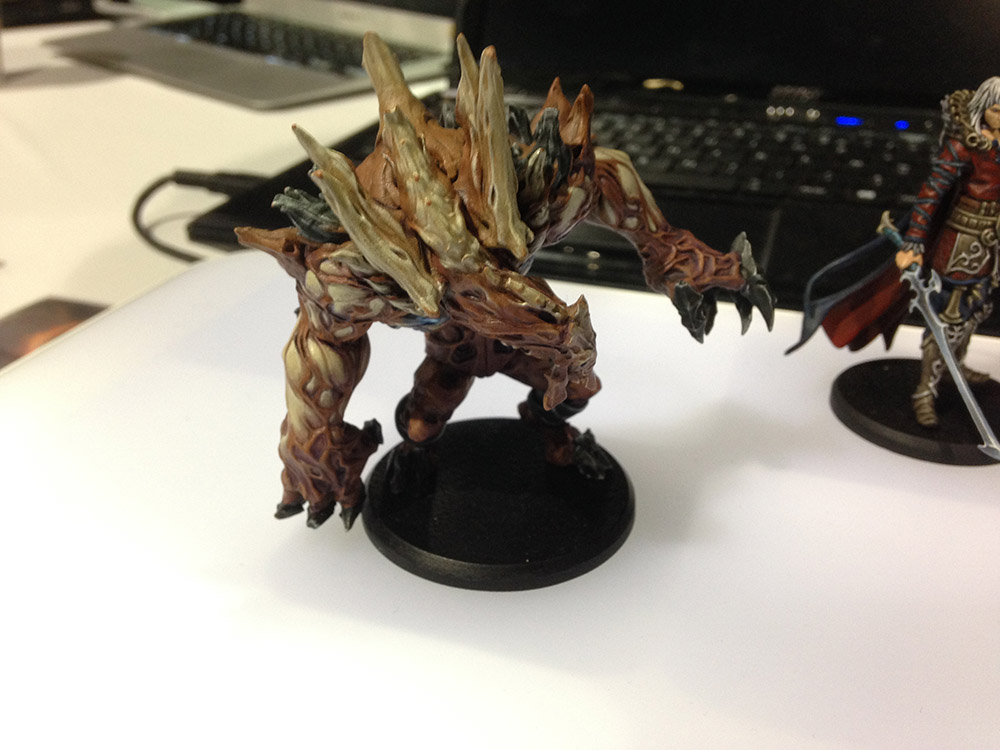
9 Comments